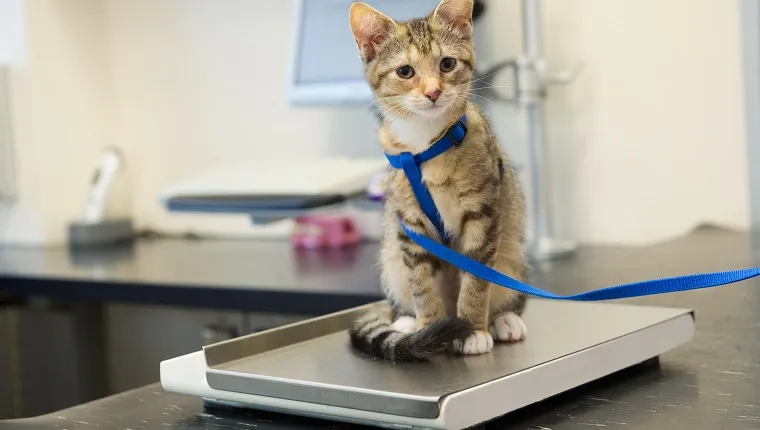Hey there, fellow feline enthusiasts! We all adore our fluffy friends, but sometimes, we might wonder, “Is my cat too skinny?” It’s an essential question because just like humans, cats come in all shapes and sizes. Today, we’re diving into the world of feline fitness and finding out how to tell if your beloved kitty is underweight.
Feline Figures: The Basics of Cat Weight
Before we jump into the nitty-gritty of cat weight, let’s get the fundamentals down.
Cats Come in All Sizes
Cats are like snowflakes—no two are alike. They can vary in size and weight based on their breed, age, and individual genetics.
The Ideal Weight Range
Generally, a healthy adult cat should fall within a specific weight range. However, it’s not just about the number on the scale; it’s about overall health and well-being.
Signs Your Cat May Be Underweight
So, how do you know if your kitty is on the slim side?
The Visual Clues
Visible Ribs and Spine: If you can easily see your cat’s ribs or spine without much pressure, it could be a sign of underweight.
Prominent Hip Bones: When you pet your cat along their lower back, do you feel their hip bones sticking out more than usual?
Loss of Muscle Mass: Cats that are underweight may have less muscle definition, appearing thin and frail.
Behavioral Clues
Decreased Appetite: A sudden loss of appetite or reduced interest in food can lead to weight loss.
Lethargy: If your cat is unusually tired and lacks energy, it might be a sign of undernutrition.
Changes in Grooming: Cats in good health usually maintain their coat. An underweight cat might neglect grooming.
Health Clues
Vomiting or Diarrhea: Persistent gastrointestinal issues can lead to weight loss.
Dental Problems: Painful dental issues may deter your cat from eating.
Consult the Experts
When in doubt, it’s time to turn to the pros.
The Vet’s Expertise
Your veterinarian is your go-to person for assessing your cat’s weight. They can perform a thorough examination and recommend appropriate dietary and medical interventions if needed.
Government Guidelines
Government bodies, like the American Veterinary Medical Association (AVMA), offer valuable resources and guidelines on feline health and nutrition.
Putting Weight on Your Cat
If your cat is indeed underweight, there are steps you can take to help them regain a healthy weight.
Dietary Adjustments
Your vet can recommend a tailored diet to meet your cat’s nutritional needs. This might include a high-calorie food or supplements.
Regular Monitoring
Keep an eye on your cat’s progress and consult with your vet regularly to ensure they are gaining weight in a healthy manner.
In Conclusion
In the world of feline fitness, there’s no one-size-fits-all answer to the question, “Is my cat too skinny?” The key is to know your cat’s baseline, watch for any sudden changes, and consult with a veterinarian if you have concerns.
Remember, a healthy cat is a happy cat, and with a little extra love and attention, your feline friend can be on the road to their ideal weight in no time. So, keep those kitties content and well-fed, and they’ll reward you with their purr-fect company!
- Best Lusha Alternatives for 2025 - April 19, 2025
- Best Overloop Alternatives for 2025 - April 19, 2025
- Best Snov.io Alternatives for 2025 - April 18, 2025



